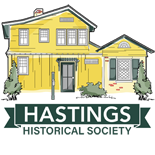Made In Hastings: Echoes of Our Industrial Past
Learn how industry in Hastings began with a marble quarry in the 1820s and water-powered mills in the ravine behind today’s James V. Harmon Community Center. Explore the rise of waterfront factories like the Hudson River Steam Sugar Refinery, the Hastings Pavement Company, and Anaconda Wire & Cable, and see how the arrival of the Hudson River Railroad in 1849 transformed the village.
By 1930, Hastings was a vibrant hub of immigrant workers, with nearly 70% of residents foreign-born, speaking 30 languages, and shaping the cultural fabric of the village through clubs, churches, and social life.
This exhibit highlights the industries, people, and communities that defined Hastings—while inspiring a vision for the future of the waterfront.
Exhibition Curators
Jake Andrus, Student Intern
Natalie Barry
Jan Clough
Amy Farber
Claudia Gisolfi
Kimberly Janeway
Ginny Kazura
Marie Paquette
Ben Smith, Student Intern
Sue Smith
Lisa Zimmerman
Designer
Lindsey Jeanne Taylor









